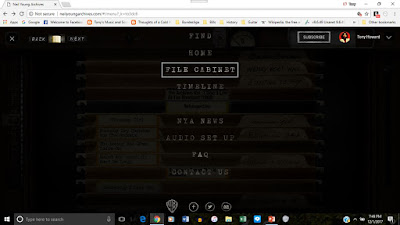I’ve seen three different adaptations of
Agatha Christie’s Murder on the Orient
Express, and I read the book. The
first time I saw it was in the mid-1970s.
Albert Finney played Hercule Poirot, the retired Belgian police officer
who is dubbed by Christie as “the world’s greatest detective”. The next time was in 2010. ITV produced a series spanning 24 years [1989-2013]
called Agatha Christie’s Poirot. It was shown weekly on PBS’s Masterpiece
Theater. If it wasn’t there, you could
catch an episode on the A&E Network.
During that time, David Suchet was
Poirot – Agatha Christie’s family wanted him to play Poirot, and for them [and
me], Suchet is the quintessential Poirot.
He inhabited the role, or probably more correctly, the role inhabited
him. In 2010 ITV finally got around to
doing their version of Murder on the
Orient Express. If you haven’t seen
it, get it. Last week I saw the latest
version, with Sir Kenneth Branagh as Poirot.
If you have read all the Christie works
that feature Hercule Poirot, or if you were like me and took the shortcut by
watching the ITV series, you already know “whodunnit”. When I learned there would be a new Murder on the Orient Express movie
coming out this year, I had only one concern.
Could Branagh pull off a convincing Poirot? I first saw him in Henry V, then other Shakespeare works Much Ado About Nothing and Hamlet. He was quite convincing as Reinhardt
Heydrich, the mastermind of the Holocaust in HBO’s Conspiracy. But could he make
Poirot his own, knowing that David Suchet is the gold standard? I’m happy to say the answer to that question
is a resounding YES – he’s pretty good.
Instead of Suchet’s “fussy” Poirot, Branagh’s Poirot has a very acute
case of OCD. But like Suchet’s Poirot,
Branagh’s Poirot tosses out the stinging one-liners with incredible ease.
There aren’t many differences between the
latest Murder on the Orient Express
and those that came before. There are
minor tweaks to some of the characters.
Instead of the story originating in Syria, this one begins in Jerusalem,
where Poirot was called to solve a theft from the Church of the Holy
Sepulchre. Once he solved this case he
went to Istanbul to get some rest. Here
the story begins the familiar narrative.
The identities of some characters [but not very many] are changed. The Swedish Greta Ohlsson [played in 1974 by
Ingrid Bergman] is now Hispanic Pilar Estravados [Penélope Cruz]. The characters of Colonel Arbuthnott [Sean
Connery] and Dr. Constantine [George Coulouris] are combined into a single
character, Dr. Arbuthnot [Leslie Odom, Jr].
Cyrus Bethman Hardman [Colin Blakely] is now Gerhardt Hardman [Willem
Dafoe]. The Italian chauffeur Antonio
Foscarelli is now Cuban chauffeur Biniamino Marquez. While the identities of some characters changed,
their roles in the story remain essentially unchanged. The location for the Daisy Armstrong
kidnapping/murder was changed from Long Island to New Jersey.
Critics of the movie lament there were few
surprises in this latest version of the Christie story. One can take just so many poetic licenses
without betraying the Christie faithful.
Another critic moaned that the movie was too Poirot-centric, but that
misses the point entirely. Christie’s
Poirot stories were written from Poirot’s point of view. The only person whose mind will be blown away
by the solution of the crime is that person who has never heard of the
story. The attraction of the movie is
the cast. One look at Johnny Depp and
you know he is the movie’s designated mort. Josh
Gad as Hector MacQueen is especially slimy.
Michelle Pfeiffer as Caroline Hubbard nearly steals the show.
For the outdoor scenes I’m sure plenty of CGI was used, but it wasn’t
CGI-overkill. Instead of the train being
stopped by a mere snowdrift, the train is almost derailed and thrown off a
bridge by an avalanche. The climactic
scene where Poirot reveals his two theories about “whodunnit” wasn’t in the
dining car, but at a railroad tunnel entrance.
There is but one twist to the narrative and that comes at the very
end. When Poirot leaves the train in
Yugoslavia to tell the authorities of his investigation of the murder and his conclusions,
he is met by someone who tells him that he is needed in Egypt to solve a murder
there. Death on the Nile will be a sequel.
One thing is certain – Kenneth Branagh is a better Poirot than either
Albert Finney or Peter Ustinov [who played Poirot in Death on the Nile]. He’s
still got some catching up to David Suchet, however.
In short, it’s a fun movie and I liked it,
even if it is a remake. Go see it.


















